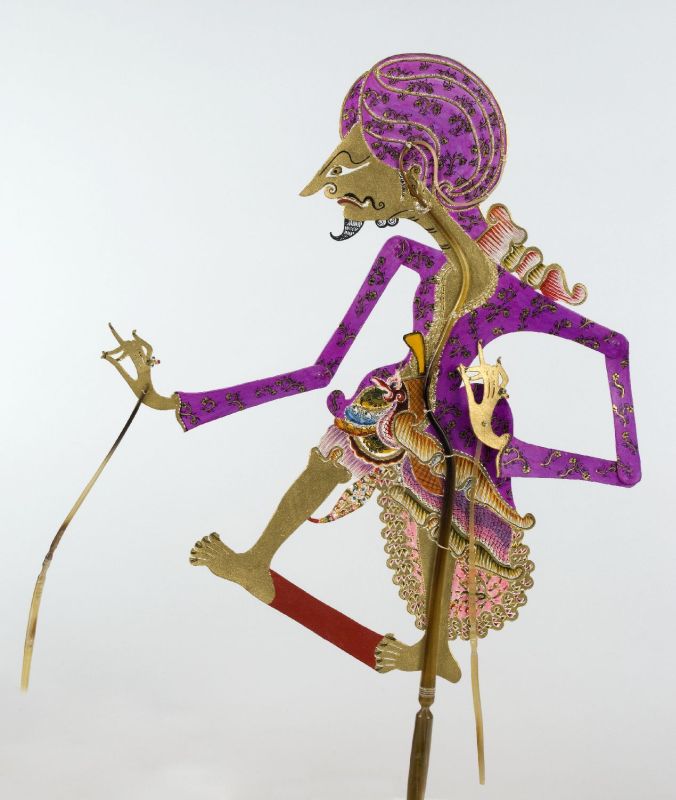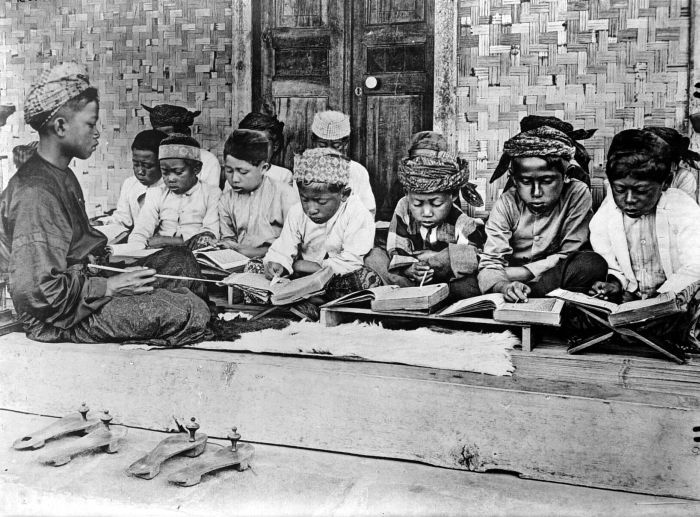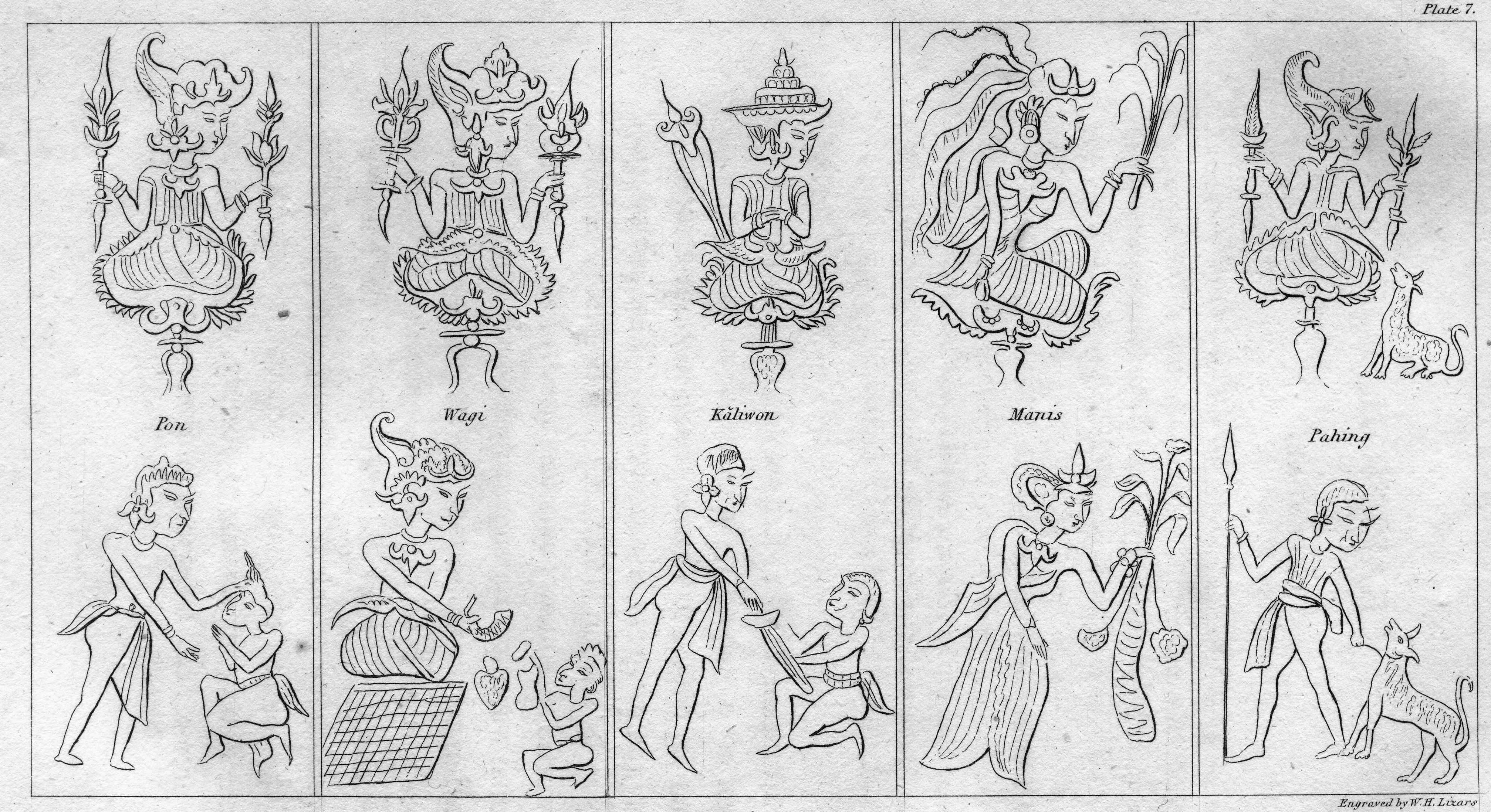|
Selamatan
The slametan (or selametan, slamatan, and selamatan) is the communal feast from Java, symbolizing the social unity of those participating in it. Clifford Geertz considered it the core ritual in Javanese religion, in particular the abangan variant.Geertz, 11. The feast is common among the closely related Javanese, Sundanese and Madurese people. A slametan can be given to celebrate almost any occurrence, including birth, marriage, death, moving to a new house, and so forth. Depending on the intention, the mood and emphasis may vary somewhat, but the main structure is the same. Geertz categorizes them into four main types: *Those relating to the crises of life: birth, circumcision, marriage, and death *Those associated with events of the Islamic calendar *The ''bersih désa'' ("cleaning of the village"), concerned with the social integration of the village *Those held irregularly depending on unusual occurrences: departing for a long trip, moving residence, changing personal nam ... [...More Info...] [...Related Items...] OR: [Wikipedia] [Google] [Baidu] |
Arabic Language
Arabic (, ' ; , ' or ) is a Semitic language spoken primarily across the Arab world.Semitic languages: an international handbook / edited by Stefan Weninger; in collaboration with Geoffrey Khan, Michael P. Streck, Janet C. E.Watson; Walter de Gruyter GmbH & Co. KG, Berlin/Boston, 2011. Having emerged in the 1st century, it is named after the Arab people; the term "Arab" was initially used to describe those living in the Arabian Peninsula, as perceived by geographers from ancient Greece. Since the 7th century, Arabic has been characterized by diglossia, with an opposition between a standard prestige language—i.e., Literary Arabic: Modern Standard Arabic (MSA) or Classical Arabic—and diverse vernacular varieties, which serve as mother tongues. Colloquial dialects vary significantly from MSA, impeding mutual intelligibility. MSA is only acquired through formal education and is not spoken natively. It is the language of literature, official documents, and formal written m ... [...More Info...] [...Related Items...] OR: [Wikipedia] [Google] [Baidu] |
Funeral
A funeral is a ceremony connected with the final disposition of a corpse, such as a burial or cremation, with the attendant observances. Funerary customs comprise the complex of beliefs and practices used by a culture to remember and respect the dead, from interment, to various monuments, prayers, and rituals undertaken in their honor. Customs vary between cultures and religious groups. Funerals have both normative and legal components. Common secular motivations for funerals include mourning the deceased, celebrating their life, and offering support and sympathy to the bereaved; additionally, funerals may have religious aspects that are intended to help the soul of the deceased reach the afterlife, resurrection or reincarnation. The funeral usually includes a ritual through which the corpse receives a final disposition. Depending on culture and religion, these can involve either the destruction of the body (for example, by cremation or sky burial) or its preservation (for examp ... [...More Info...] [...Related Items...] OR: [Wikipedia] [Google] [Baidu] |
Wedding
A wedding is a ceremony where two people are united in marriage. Wedding traditions and customs vary greatly between cultures, ethnic groups, religions, countries, and social classes. Most wedding ceremonies involve an exchange of marriage vows by a couple, presentation of a gift (offering, rings, symbolic item, flowers, money, dress), and a public proclamation of marriage by an authority figure or Celebrant (Australia), celebrant. Special wedding garments are often worn, and the ceremony is sometimes followed by a wedding reception. Music, poetry, prayers, or readings from religious texts or literature are also commonly incorporated into the ceremony, as well as Wedding superstitions, superstitious customs. Common elements across cultures Some cultures have adopted the traditional Western custom of the white wedding, in which a bride wears a white wedding dress and veil. This tradition was popularized through the marriage of Queen Victoria. Some say Victoria's choice of ... [...More Info...] [...Related Items...] OR: [Wikipedia] [Google] [Baidu] |
Tumpeng Slametan IGDA
Tumpeng (Javanese script, Javanese: ; Balinese script, Balinese: ) is an Indonesian cuisine, Indonesian cone-shaped rice dish with side dishes of vegetables and meat originating from Javanese cuisine of Indonesia. Traditionally featured in the ''Slametan, slamatan'' ceremony, the rice is made by using a cone-shaped woven bamboo container. The rice itself may be plain steamed rice, nasi uduk, uduk rice (cooked with coconut milk), or nasi kuning, yellow rice (uduk rice colored with ''kunyit'' (turmeric)). The rice cone is erected in the (rounded woven bamboo container), covered with a banana leaf, and surrounded by assorted Indonesian dishes. In 2013, the Ministry of Culture and Tourism (Indonesia), Indonesian Ministry of Tourism and Creative Economy promoted tumpeng as one of 30 Indonesian cuisine, Indonesian culinary icons and gave it the status of official national dish of Indonesia in 2014, describing it as "the dish that binds the diversity of Indonesian various culinary tradi ... [...More Info...] [...Related Items...] OR: [Wikipedia] [Google] [Baidu] |
Al-Fatiha
Al-Fatiha (alternatively transliterated Al-Fātiḥa or Al-Fātiḥah; ar, ألْفَاتِحَة, ; ), is the first ''surah'' (chapter) of the Quran. It consists of 7 '' ayah'' (verses) which are a prayer for guidance and mercy. Al-Fatiha is recited in Muslim obligatory and voluntary prayers, known as '' salah''. Quranic chapter titles are not considered by Muslims to be part of the divine revelation of the Quran. The primary literal meaning of the expression "Al-Fatiha" is "The Opener/The Key", which could refer to this Surah being the first in the Quran, the first chapter recited in full in every ''rakat'' of ''salah'', or to the manner in which it serves as an opening for many functions in everyday Islamic life. Some Muslims interpret it as a reference to an implied ability of the Surah to open a person to faith in God. Summary Surah Al-Fatiha is narrated in the Hadith to have been divided into two halves between Allah and His servant (the person reciting), the first t ... [...More Info...] [...Related Items...] OR: [Wikipedia] [Google] [Baidu] |
Koran
The Quran (, ; Standard Arabic: , Quranic Arabic: , , 'the recitation'), also romanized Qur'an or Koran, is the central religious text of Islam, believed by Muslims to be a revelation from God. It is organized in 114 chapters (pl.: , sing.: ), which consist of verses (pl.: , sing.: , cons.: ). In addition to its religious significance, it is widely regarded as the finest work in Arabic literature, and has significantly influenced the Arabic language. Muslims believe that the Quran was orally revealed by God to the final prophet, Muhammad, through the archangel Gabriel incrementally over a period of some 23 years, beginning in the month of Ramadan, when Muhammad was 40; and concluding in 632, the year of his death. Muslims regard the Quran as Muhammad's most important miracle; a proof of his prophethood; and the culmination of a series of divine messages starting with those revealed to Adam, including the Torah, the Psalms and the Gospel. The word ''Quran'' occurs some ... [...More Info...] [...Related Items...] OR: [Wikipedia] [Google] [Baidu] |
Kyai
A kyai ( ) is an expert in Islam, usually used among the ethnic Javanese people. Origins The word is of Javanese origin. Sometimes it is spelled kiai. Traditionally, students of Islam in Indonesia would study in a boarding school known as a pesantren. The leader of the school was called kyai, as a form of respect. The traditional word for a teacher in Islam is ustad, which is a Persian word. There are many ustads in Indonesia who teach the religion, but most of them do not have a boarding school. Education Kiai were educated in various pesantren: A student in a pesantren is called a santri. After the founding kyai of a pesantren dies, his son or another santri may take over the supervision of the school, and would then be called kyai. It is possible for a large boarding school to have several kyai living and teaching there. However, most pesantren have a few hundred students, with only one person who is called kyai. The other teachers in the school are called ustadz. Many Ind ... [...More Info...] [...Related Items...] OR: [Wikipedia] [Google] [Baidu] |
Pesantren
''Pesantren'', or ''pondok pesantren'', are Islamic boarding schools in Indonesia. They consist of pondok, mosque, santri, teaching of classical Islamic texts and Kyai.Zamakhsyari Dhofie''The Pesantren Tradition: A Study of the Role of the Kyai in the Maintenance of the Traditional Ideology of Islam in Java''Tempe, AZ: Arizona State University Program for Southeast Asian Studies Monograph Series. According to one popular tradition, the ''pesantren'' education system originated from traditional Javanese ''pondokan''; dormitories; ashram for Hindu or viharas for Buddhists to learn religious philosophies, martial arts and meditation. Institutions much like them are found across the Islamic world and are called ''pondok'' in Malaysia and Southern Thailand and '' madrasa Islamia'' (Islamic madrasa) in India and Pakistan and much of the Arabic-speaking world. The ''pesantren'' aim is to deepen knowledge of the Qurʾān, particularly through the study of Arabic, traditions of exegesis, ... [...More Info...] [...Related Items...] OR: [Wikipedia] [Google] [Baidu] |
Javanese Calendar
The Javanese calendar ( jv, ꦥꦤꦁꦒꦭ꧀ꦭꦤ꧀ꦗꦮ, Pananggalan Jawa) is the calendar of the Javanese people. It is used concurrently with two other calendars, the Gregorian calendar and the Islamic calendar. The Gregorian calendar is the official calendar of the Republic of Indonesia and civil society, while the Islamic calendar is used by Muslims and the Indonesian government for religious worship and deciding relevant Islamic holidays. The Javanese calendar is used by the main ethnicities of Java island—that is, the Javanese, Madurese, and Sundanese people—primarily as a cultural icon and identifier, and as a maintained tradition of antiquity. The Javanese calendar is used for cultural and spiritual purposes. The epoch of the Javanese calendar was in year 125 CE. The current system of the Javanese calendar was inaugurated by Sultan Agung of Mataram in the Gregorian year 1633 CE. Prior to this, the Javanese had used the Śaka calendar, which has its epoch i ... [...More Info...] [...Related Items...] OR: [Wikipedia] [Google] [Baidu] |
Maghrib
The Maghrib Prayer ( ar, صلاة المغرب ', "sunset prayer") is one of the five mandatory salah (Islamic prayer). As an Islamic day starts at sunset, the Maghrib prayer is technically the first prayer of the day. If counted from midnight, it is the fourth prayer of the day.see 'Glossary' Retrieved 12 July 2020Significance of Offering The Isha Prayer and Its Benefits QuranReading website, Published 29 January 2015, Retrieved 14 May 2017 According to Sunni Muslims, the period for Maghrib prayer starts just after |









